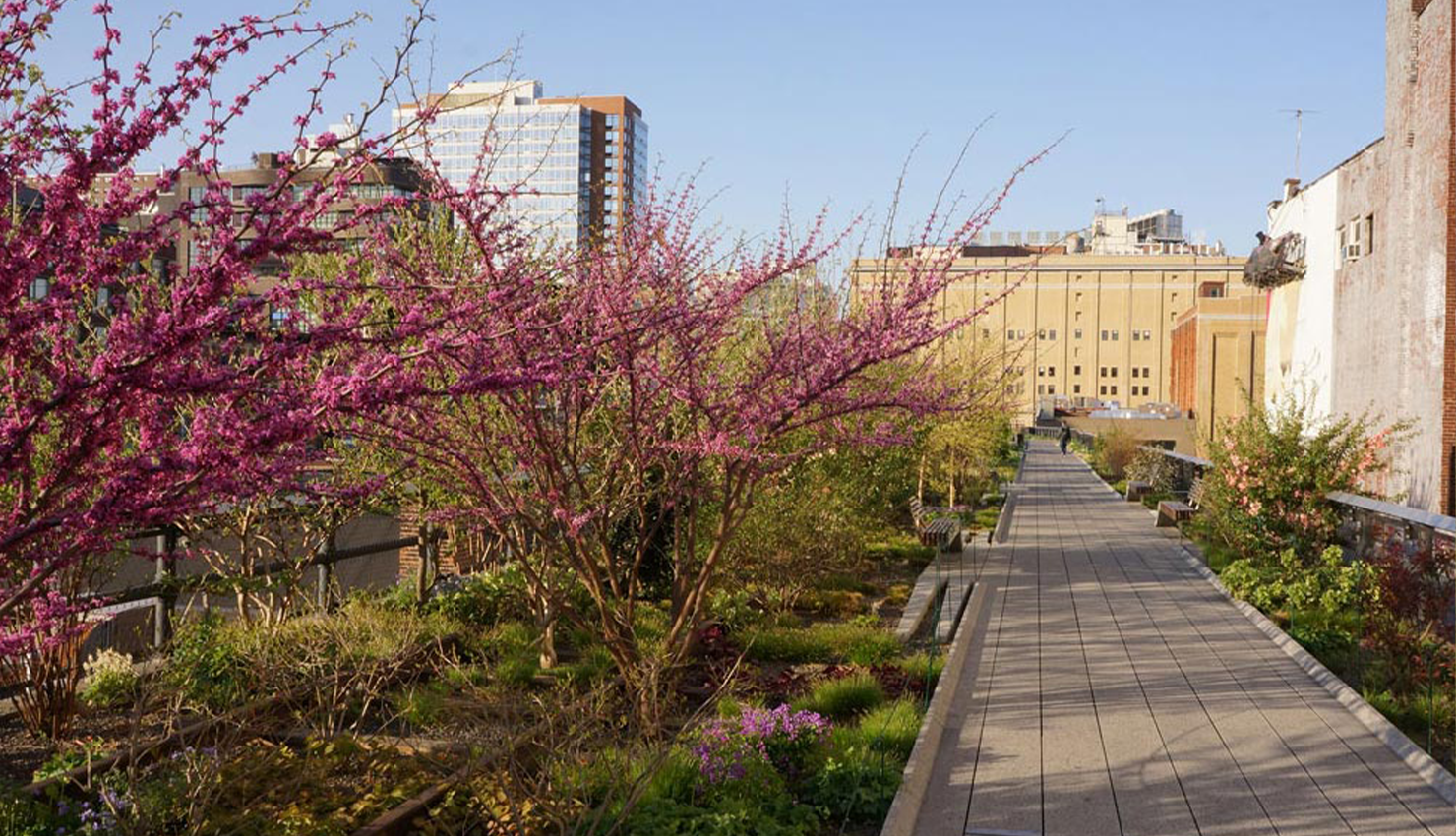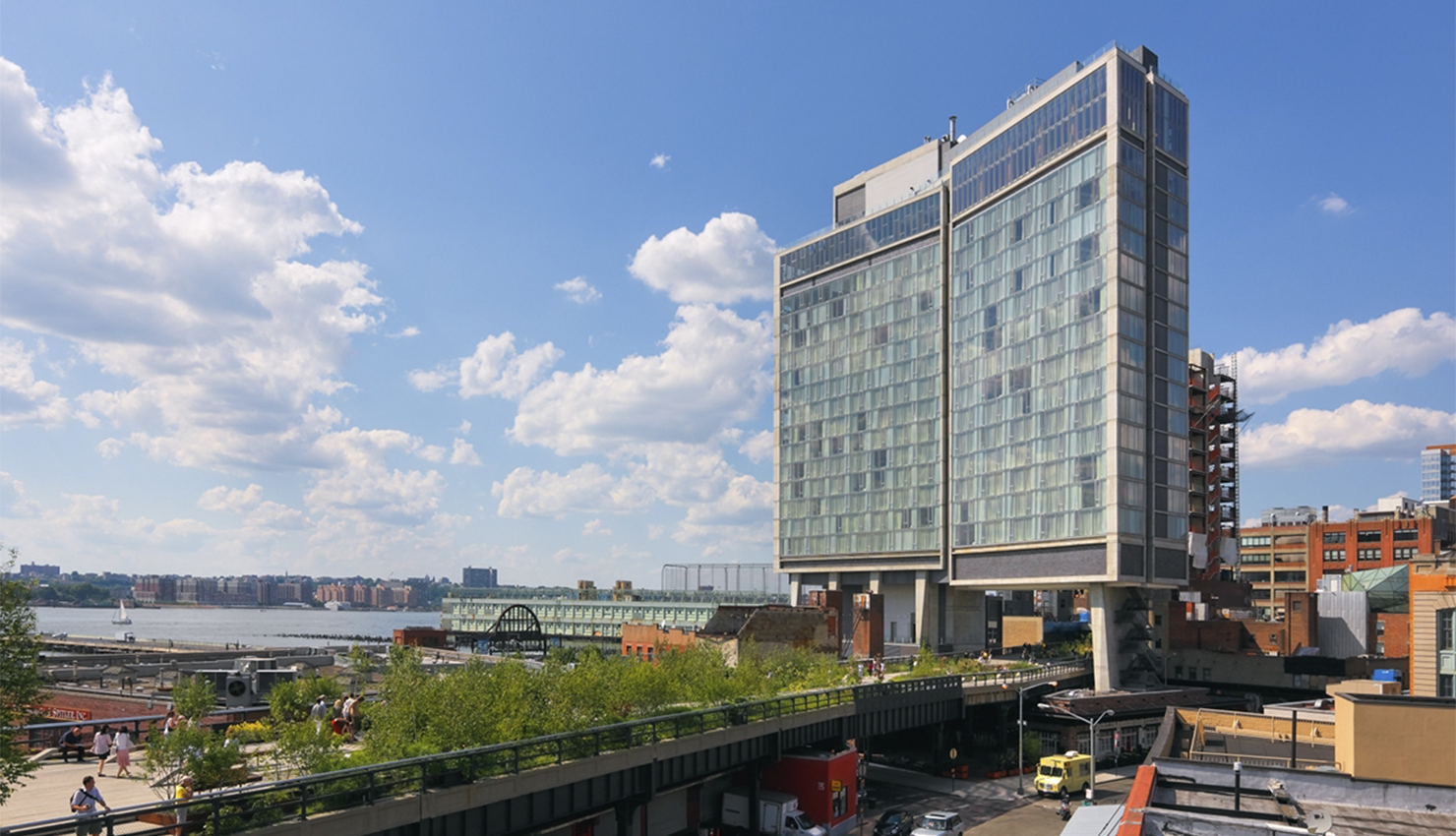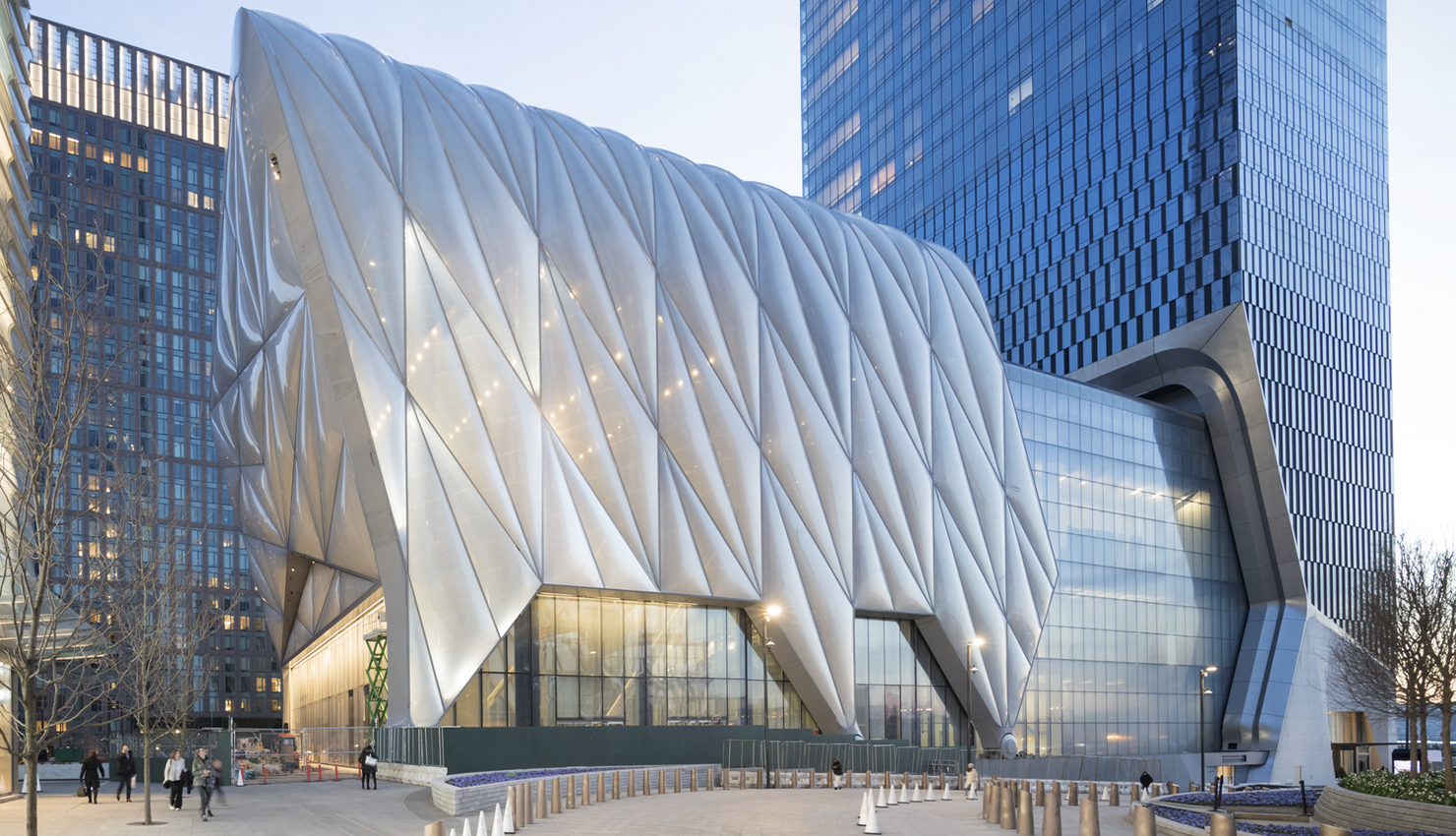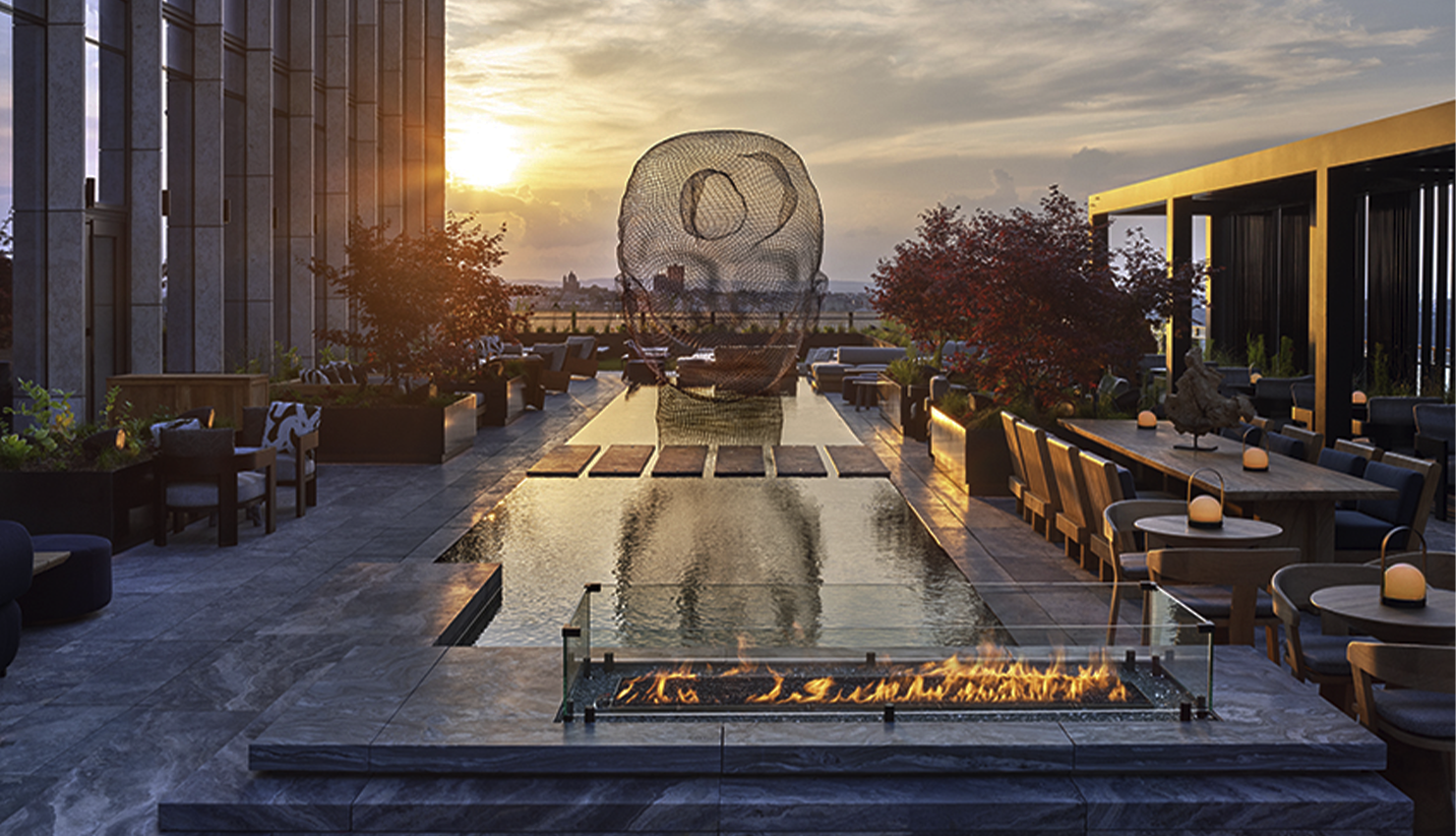We visited the High Line, the elevated park that, since its opening in 2009, has transformed the daily life of Manhattan’s meatpacking district on the west bank of the Hudson River. Designed by Diller Scofidio and Renfro in collaboration with James Corner Field Operations and the celebrated Dutch landscaper Piet Oudolf, the High Line is a 1.5-mile-long elevated public park and a permanent laboratory of ideas.
In “Shame,” a film by Steve McQueen (released in 2011) that portrayed the life of a sex addict played by Michael Fassbender, some of the furtive encounters took place at the Standard Hotel in New York. Undoubtedly, it was one of the best publicity stunts to put on the map the dizzying allure of rooms with enviable views of the Hudson River and, at the same time, the courtesy of the newly opened High Line, the elevated linear park that has changed the life of the meatpacking district in southwest Manhattan since its opening in 2009.
Exploring the High Line: An Experience You Must Know in NY
The High Line was built on old freight train tracks that supplied this part of the west side of the Big Apple for many years in the 20th century. At that time, it was full of factories, warehouses, and slaughterhouses. This is the most surprising project undertaken in recent decades in New York. It is also one of the best examples of the rehabilitation, recovery, and transformation of an industrial past.

Along the walkway, pedestrians can enjoy the place while admiring the views. Photo: Iwan Baan
The new Whitney Museum by Renzo Piano on the banks of the Hudson
We can locate its beginning at Gansevoort St with Washington St, at the southern end, where in 2015 the new Whitney Museum opened its doors. This is the third building by the Renzo Piano Building Workshop in Manhattan, a visually ambitious work that reveals a constructivist vision that connects it with the original Whitney Museum. A masterpiece conceived by Marcel Brauer in 1996, a sculptural concrete building that injected a good dose of Bauhaus mentality into the Upper East Side, next to Central Park, and one that even Jackie Kennedy visited mesmerized, as evidenced by the numerous photographs of the inauguration.

The Whitney Museum. Photo: Nic Lehoux
The gardens by landscape architect Piet Oudolf invite you to connect with nature
The new Whitney by Renzo Piano is the starting point of the High Line. Designed by Diller Scofidio and Renfro in collaboration with James Corner Field Operations and Dutch landscape architect Piet Oudolf (responsible for gardens distributed worldwide, who succeeded in specializing in public works with projects like the Hauser and Wirth in Menorca, the interior garden of the Serpentine Gallery in London with Peter Zumthor, or Battery Park in New York itself), the High Line is one of his most representative works and where his main landscape designer’s efforts coincide: a garden, for Oudolf, is not just a collection of plants, it is the emotion of an atmosphere. It’s not a landscape to observe but to participate in and connect with. It doesn’t just aim to take advantage of flowering seasons, but the entire life cycle of plants. It has been said that his proposal is closer to ecology than ornamental gardening. Something that is appreciated in the High Line, so full of inorganic elements like stone, wood, steel, sculptural works, and at the same time, aromas and textures characteristic of seasonal changes.

The High Line walkway with the garden created by Piet Oudolf. Photo: Annik La Farge & Rick Darke
The High Line is a public park inspired by the melancholic beauty of post-industrial remains that also reinterprets the biodiversity that has arisen spontaneously to create a series of urban microclimates. When you see so many people sunbathing on the wooden benches that seem to unfold from the ground, you understand to what extent it has connected with people. The furniture and vegetation evoke the idea of an elongated and leisurely park, a haven of disconnection north of Greenwich Village. The pavement consists of elongated concrete pieces with wedge-shaped ends, serving the grass. Everything invites you to stroll or contemplate.

Along the walkway, pedestrians can enjoy the place while admiring the views. Photo: Andrew Frasz.
The birthplace of Oreo cookies
Celebrated architect and designer David Rockwell argues that, accustomed to seeing Manhattan from the street or from above, one of the great achievements of the High Line is that it allows you to see the city from an intermediate place. Thus, we see the Chelsea Market, where the Nabisco cookie factory was once located, and where Oreo cookies were invented.
Pokémon in sight
The Standard Hotel reminds us of the movie and those two “sincere” scenes in which Brandon engaged in sexual activity in front of the glass, visible to anyone who cared to look up at the transparency of a building from 2009 designed by Ennead Architects. Committed to fostering creativity, the Standard has partnered with the Perrotin Gallery to exhibit works by American artist Daniel Arsham: iconic sculptures that breathe new life into Pokémon characters like Pikachu, Mewtwo, or the Trainer.

The iconic Standard anchored along the High Line. Photo: Ryan R. Browne, Jeff Goldberg
The melody that brought New York to life
It’s impossible to be here, looking out over the Hudson (to the west) or the avenues from whose sewers rise the classic smoke sighs (to the east), and not remember the beginning of Rhapsody in Blue, that composition that defines like no other the life of New York, born from the dream of George Gershwin. To unite symphonic music with elements of jazz, an orchestral work written precisely, as its author pointed out, amidst the rattling of a train heading to Boston. There is no musical composition that starts with such a long and memorable clarinet solo.
That siren that lifts the day and positions us among skyscrapers, that takes us here and there, navigating through traffic, the noise, the everyday rush to return us, not without some melancholy, to the calm of the night when the lights and sounds of the city fade away. Gershwin was born in Brooklyn in 1898 and premiered this work at the Aeollian Hall one night in 1924. Leonard Bernstein said: “Rhapsody in Blue shook New York, then the whole country, and finally the entire civilized world.” Woody Allen started his unforgettable Manhattan with it while his voiceover said: “It was a city that pulsated to the rhythms of Gershwin’s melodies.”
Among flowers and butterflies
On the path along the High Line, there are flowers like Swamp Rose Mallow, a marsh hibiscus, a perennial plant that is not only magnificent to behold but also attracts a wide variety of wildlife, including birds, butterflies, and rodents. There is a native Manhattan plant that is a hub of insect activity, the Butterfly Milkweed, essential in the life cycle of the monarch butterfly that tints the mountains of Michoacán, Mexico orange every January, now endangered worldwide. There are red cedars that serve as habitats for birds and provide small fruits.

The High Line hosts over 500 perennial plants, grasses, shrubs, vines, and trees with a horticulture program. Photo by Carlos Sanfer on the left. Photo on the right by Andrew Frasz.
The Hudson turned into poetry
There are also plenty of inevitable views of the Hudson, which one approaches as if delving into the past. To a book of old photographs from which echoes of well-known poems by Lorca or José Hierro resonate, like the one that opened his Notebook of New York, not coincidentally titled Rhapsody in Blue, and in which after the prelude it says:
The clarinet now sounds
on the other side of the ocean of years.
It beached on the torrid beaches of the cotton fields.
There it died foreign deaths and lived forsakenness.
It submitted and suffered, but it rebelled.
That’s why it sings now, hopeless and future,
with the wail of an ambulance siren
or a police car.
It sounds beautiful and terrible.
The pilgrim silk of the Hudson,
unceasing and majestic,
leads the city to freedom
and the definitive purification of the sea
forever being reborn.
The pilgrim silk of the Hudson floats to our left, and at the height of 16, the skyscrapers of Hudson Yards can already be glimpsed. But before that, at the intersection of 10th Avenue and 30th Street, the eye-catching fluorescent pink tree on the bridge connecting the two streets by Swiss artist Pamela Rosenkranz (promoted by High Line Plinth, a landmark for public art, reminiscent of the branching systems of organs, blood vessels, and tissues of the human body, which will remain until the fall of 2024), the luminous mural by artist Nina Chanel Abney, an African-American painter who explores race, gender, pop culture, homophobia, and politics in her work, as well as the sculpture by Syrian artist Diana Al-Hadid, based in Brooklyn, which blends so well with the colors of autumnal vegetation, have seduced.

The sculpture ‘Old Tree’ by Swiss artist Pamela Rosenkranz represents a tree that connects the sky with the earth. Photo: Timothy Schenck
New perspectives
One cannot overlook The Shed, an impressive cultural center designed by Diller Scofidio + Renfro as the lead team and Rockwell Group as an associate. It is located next to the Bloomberg skyscraper and consists of an innovative 18,580m2 structure that moves on wheels. Yes, a flexible building that expands and contracts by rolling the telescopic roof on rails, just like the trains that used to run on the foundational tracks of the High Line. Nearby, the residential skyscraper 15 Hudson Yards also stands out, similarly designed by Diller Scofidio + Renfro with David Rockwell as the chief interior architect.

The Shed building. Photo: Iwan Baan
In the same area, Rockwell was also responsible for the design of the Equinox Hotel New York (included in the List of World’s Best). We went up to its terrace to see Jaume Plensa’s sculpture, which, like us, observes the waters of the Hudson from above, without us being clear whether they are a mirror or a gateway to myth. To see more of Plensa’s work, nothing like the imposing triple-height lobby, enhanced by an original hanging installation by the Catalan artist in the 30 Hudson Yard skyscraper.

Jaume Plensa’s sculpture crowns the Equinox Hotel in New York from above. Photo provided by the hotel.
The city at our feet
There are queues to buy tickets and peer into The Edge, the most visited attraction these days: the thrill of height and an observation deck on the 100th floor. The Vessel has closed its doors to the public due to several suicide cases, but the work of the controversial British designer Thomas Heatherwick still catches the eye: a structure like a honeycomb that rises 16 floors. There is so much elevation at the end of the High Line that one remembers that wonderful Netflix series called Pretend it’s a City, in which Fran Lebowitz talks about the skyscrapers of New York. When recalling the Chrysler Building, she says: “The incredible thing about it is the details and its beauty. I think it’s for sale right now, and, I’m not going to buy it, but for me, it’s the perfect size to be a single person’s home.”

From the magnificent Edge skyscraper, you can enjoy a panoramic view of the city. Photo provided by Edge.
The anecdotes of the eccentric American writer, the laughter of Martin Scorsese, and the architecture of New York are the common thread of a fragmented interview interspersed with humor. “When people ask me, ‘Why do you still live here?’ it’s impossible to answer them except that I feel contempt for those who don’t have the courage to do it.”




